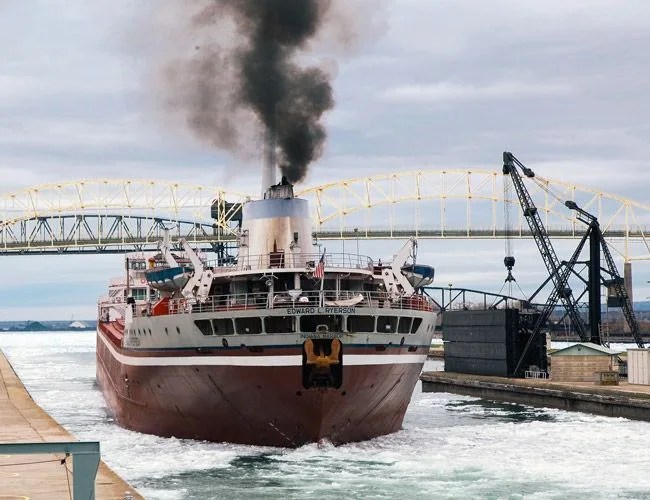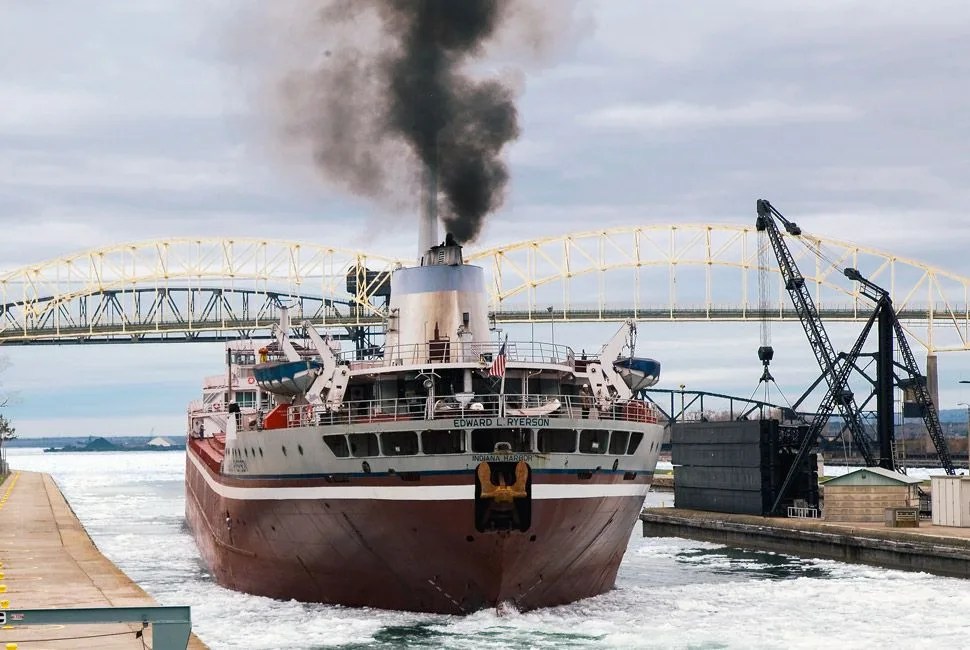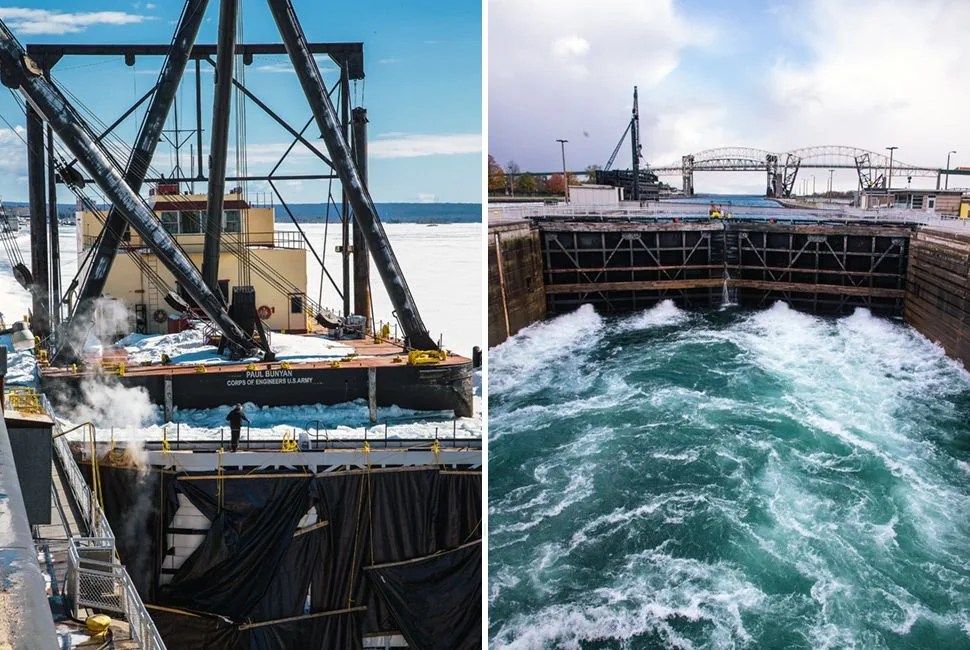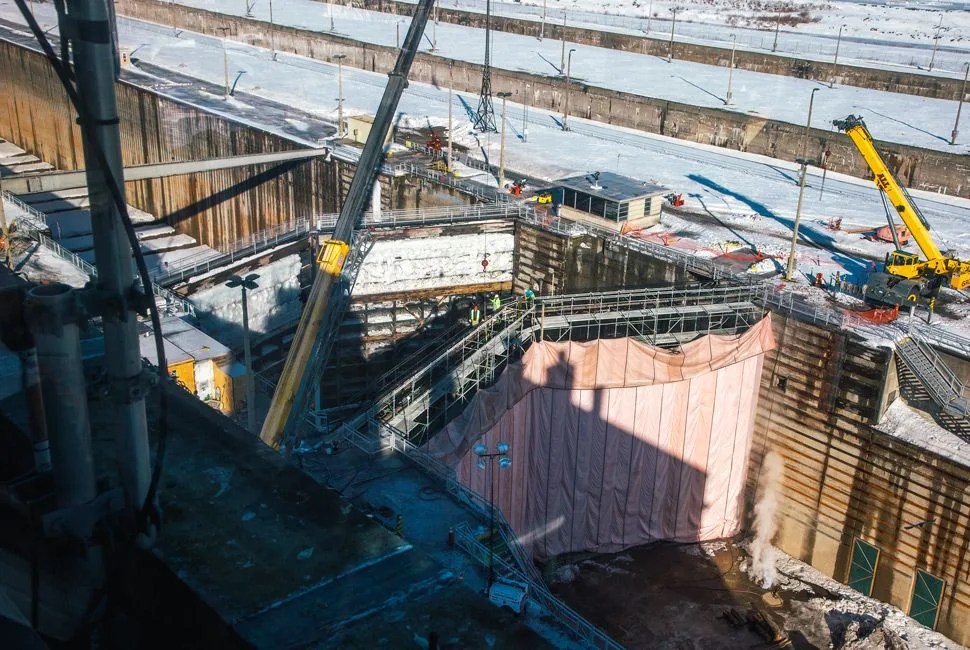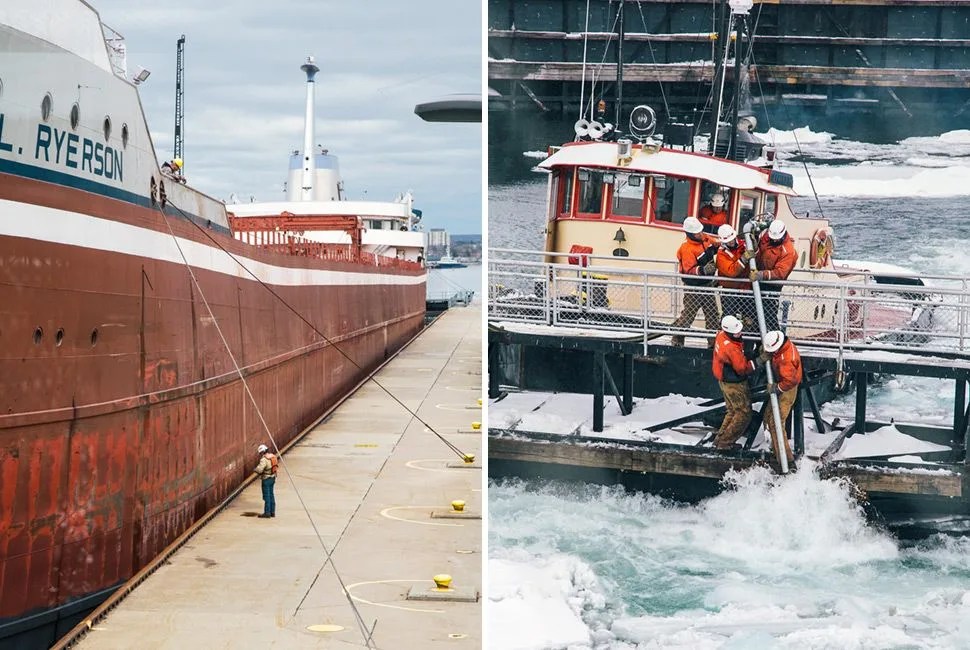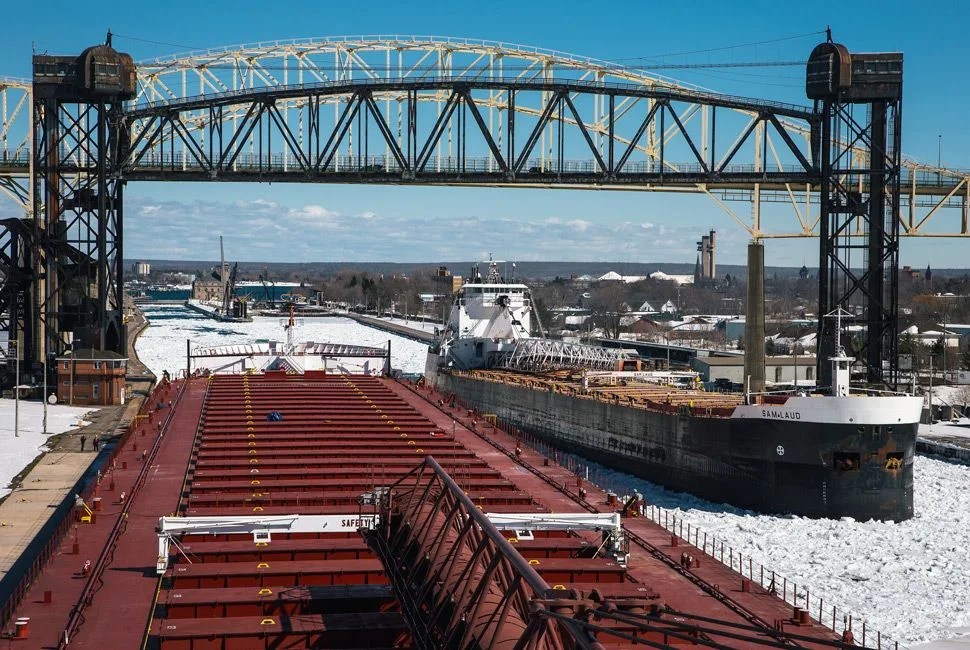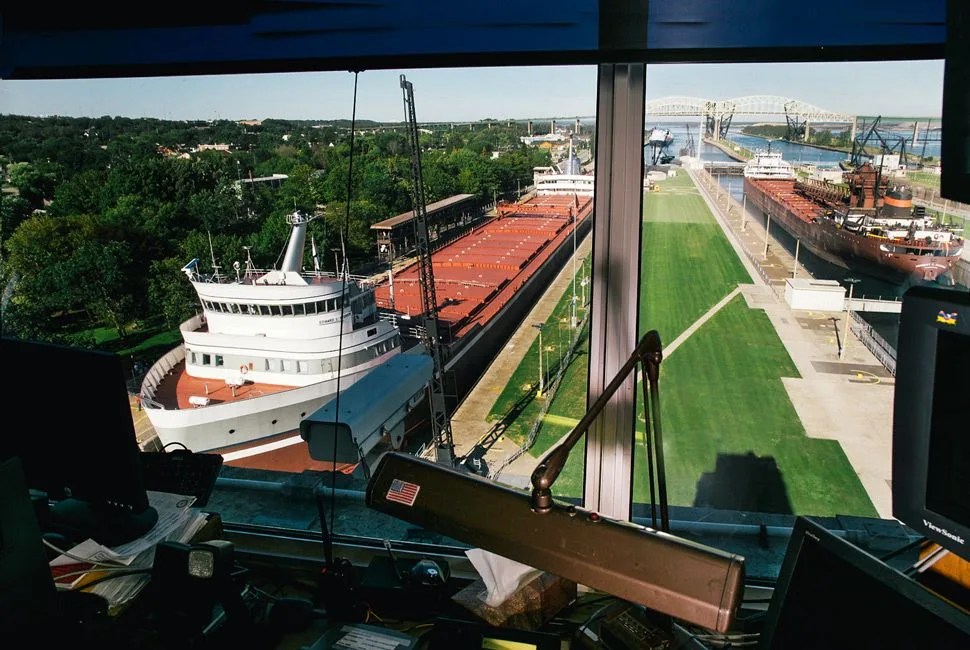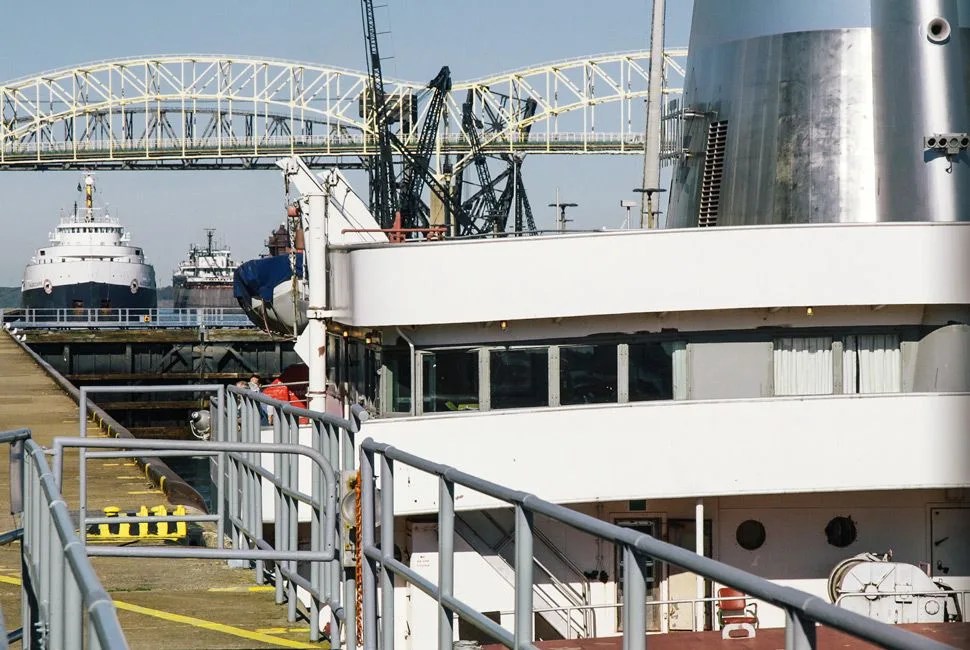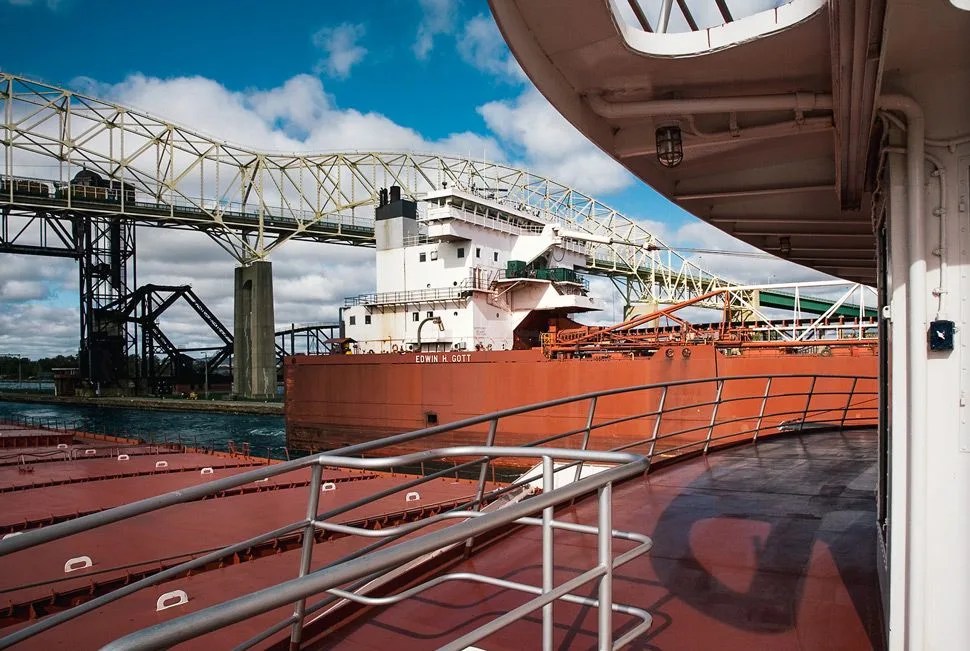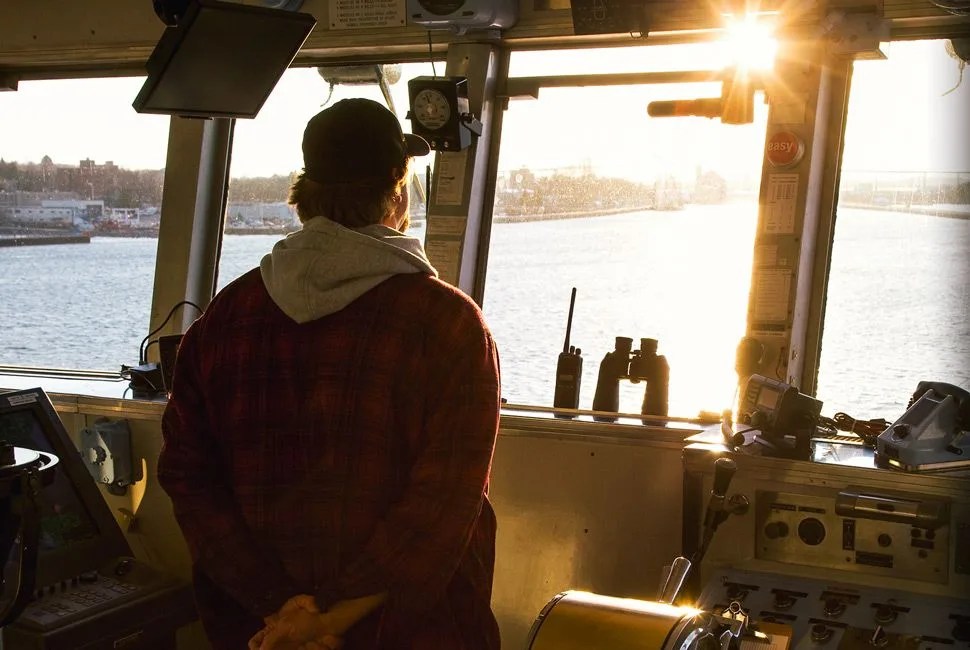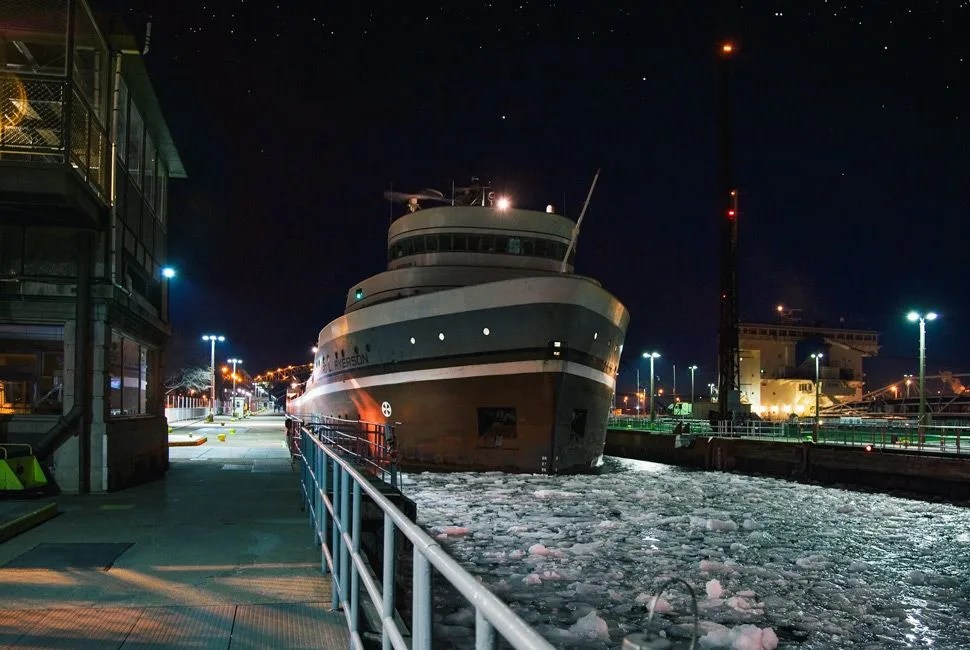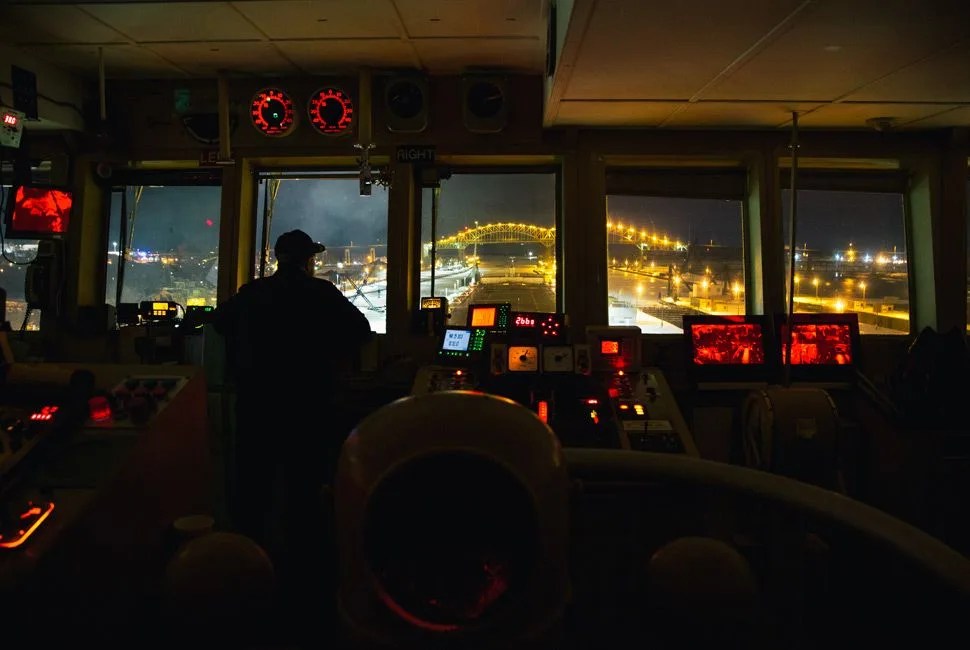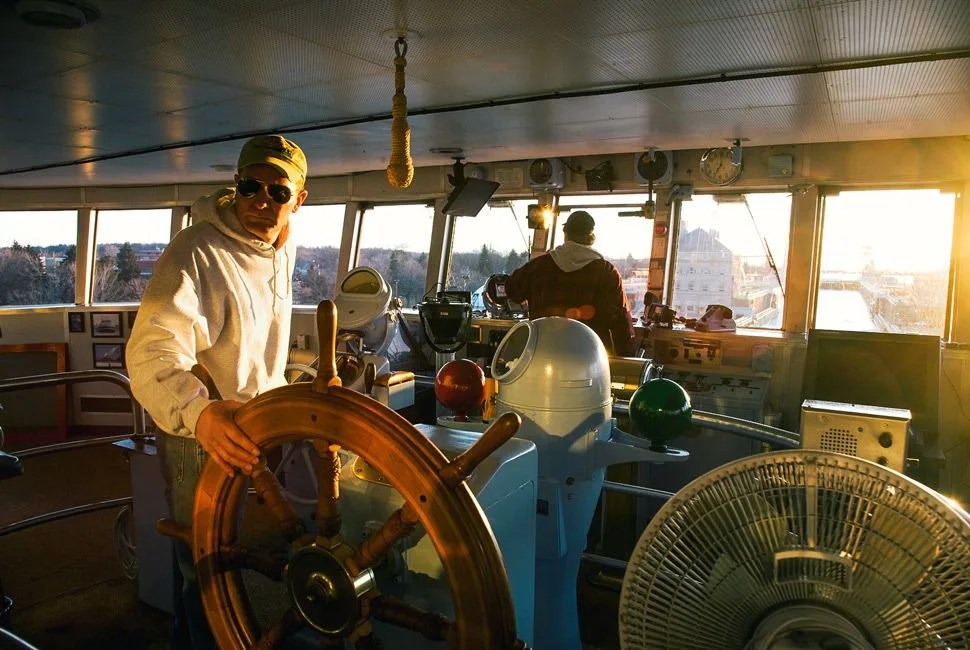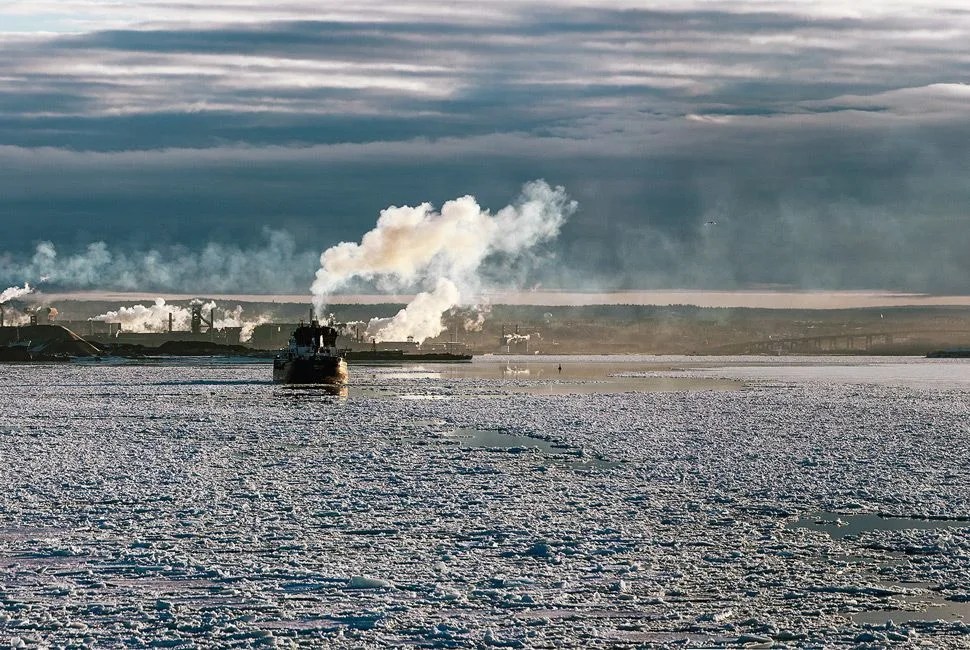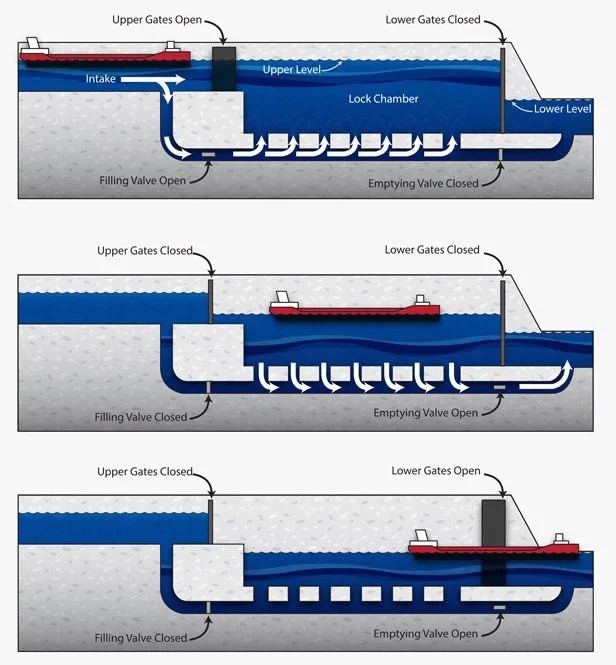18 photos
At 1,013 x 105 feet in length and beam, the M/V Paul R. Tregurtha is the largest vessel trading on freshwater. On this cold spring morning in March, she leaves the vastness of Lake Superior through the navigation locks at Sault (pronounced “Soo”) Ste. Marie, Michigan, en route to the lower Great Lakes, with only two and a half feet to spare on either side of her hull. Factoring for wind and current, Captain Bob Thibaudeau eases her bow alongside the West Pier, sliding the approach to the Poe Lock with a matter-of-fact jockeying of the boat’s twin screws and bow thruster. Finessed into position, she fills up the chamber, “like a whale in a bathtub”, to quote the stock Chamber of Commerce cliché.
7,000 vessels from dozens of different seafaring nations slide through the gates of the Poe and the MacArthur locks at the Soo 24 hours a day, 42 weeks per year — many with iron ore cargoes valued at over $500 billion dollars per annum on average. The locks are closed to the public except for the last Saturday of June, when the Army Corps of Engineers sponsors an annual “Engineer’s Day”, a unique opportunity to get an insider’s view of this shipping gateway and engineering marvel that still looks and feels like it’s at the frontier of the New World.
A thick layer of sandstone bedrock holds back the waters of Lake Superior where it joins St. Mary’s River. The river loses 21 feet of elevation in less than a mile at Sault Ste. Marie creating a Class 3 stumbling block for waterborne commerce. The first navigation lock around the “Sault” (French for “rapids”) was built for canoes in 1797. It was destroyed by US forces during the War of 1812 to prevent the British from stepping on our feet in what was at that time the extreme frontier of the New World. For decades thereafter, mariners were forced to carry their cargoes and their boats around the falls. The main street in The Soo is still tabbed “Portage Avenue” as a consequence.
Mining interests began to mushroom in the North in the 1850s. The transcontinental railroad boom and a little dust-up called the Civil War pushed the demand for iron ore and copper through the roof by 1860. This unstoppable market force begot the push to rebuild the lock at St. Marys Falls. The “State Lock” was completed in 1855 so vessels could finally begin bypassing the rapids. After the discovery of Minnesota’s Mesabi Iron Range, the complex became the busiest shipping artery in the world, with more tonnage pulsing through its four locks than the Suez and Panama canals combined.
How Locks Work
